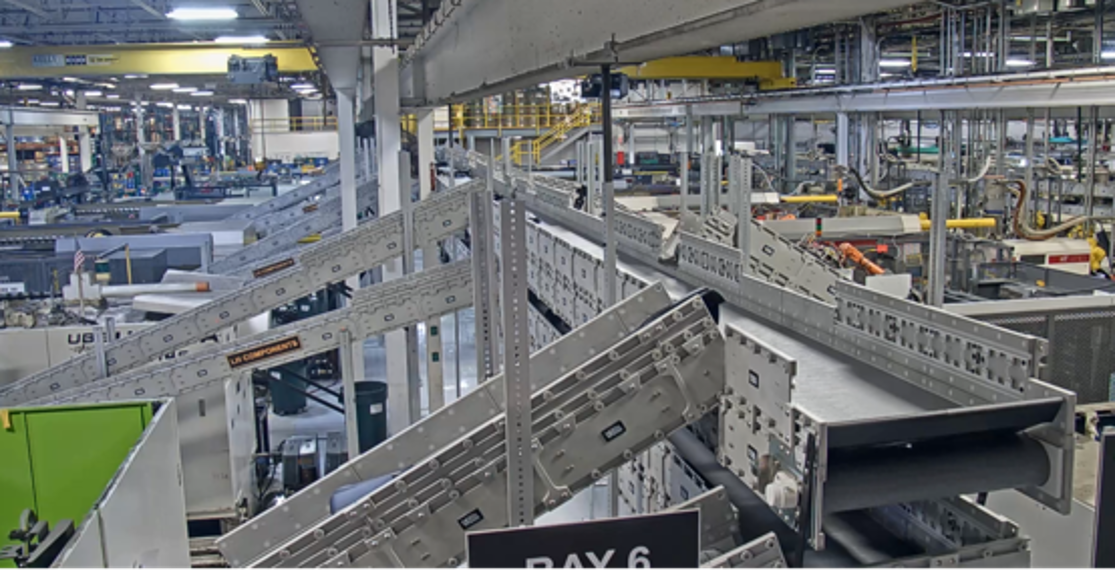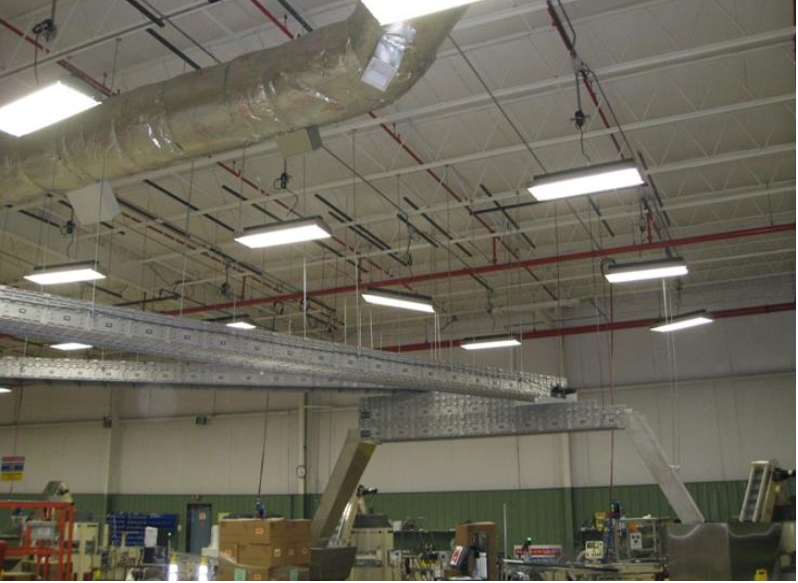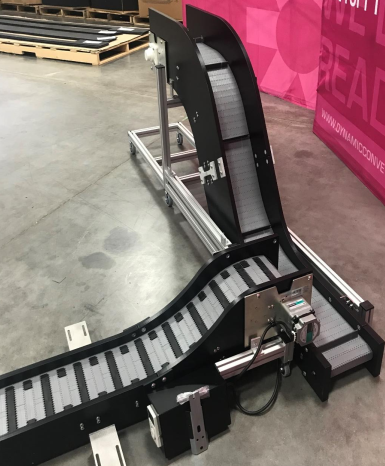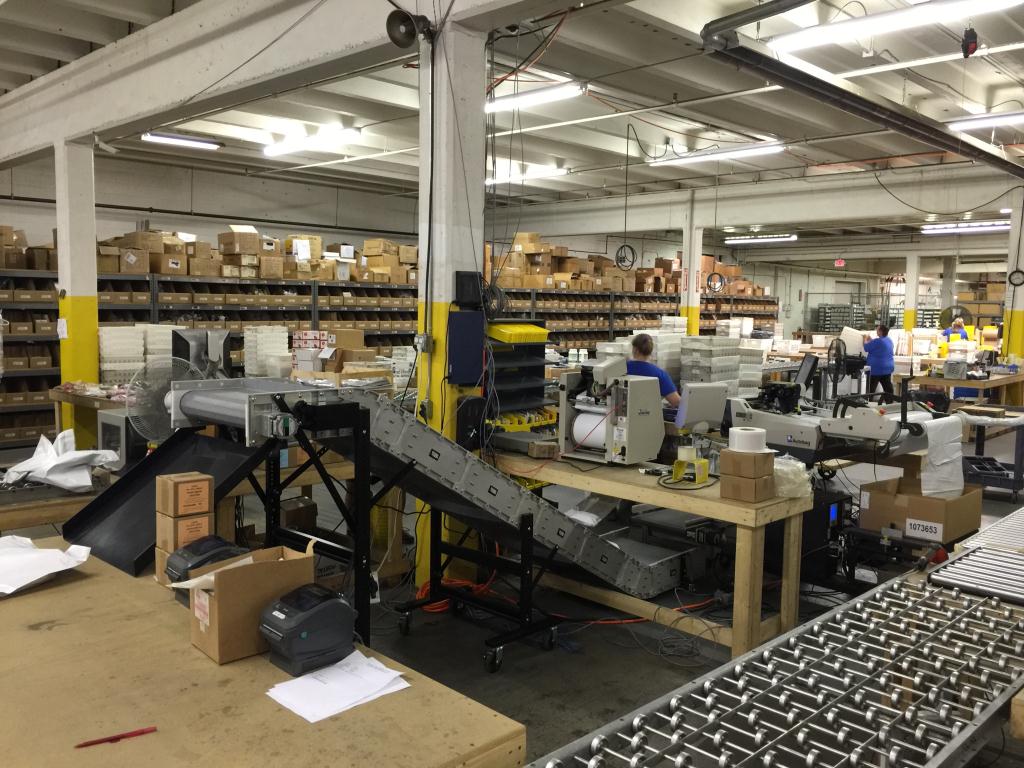Looking to enhance your facility’s vertical material transport? Incline conveyors efficiently move products to higher or lower levels, offering ergonomic benefits and integration with existing systems. This guide will unpack the features, types, and industry applications of incline conveyor systems, equipping you with the knowledge to boost your operational efficiency without sacrificing safety or space.
Key Takeaways
- Incline conveyors, customizable in type and design, improve operational efficiency by safely transporting materials to different elevations, handling a variety of loads, and reducing the need for manual labor.
- These systems are advantageous in optimizing space, enhancing safety, and increasing productivity, with features such as customizable angles, belt materials, and integrated safety sensors and controls.
- Essential across multiple industries, incline conveyors cater to specific applications with options for direct food handling, seamless integration in packaging systems, and material transport in manufacturing, among others.
Understanding Incline Conveyors

Incline conveyors, as their name implies, are designed to transport materials to higher or lower elevations. They are not just simple machines that move things up and down; they offer various applications, provide ergonomic support, and even feed parts into ancillary equipment. Integrated with other conveyors and equipment, they allow for adaptability to cater to different applications. They are the unsung heroes in many industries, optimizing speed and efficiency while ensuring safe product flow and control throughout continuous operations on inclines.
Among the leading manufacturers of these systems is Dynamic Conveyor, known for their modular and low-maintenance designs. But what exactly makes these conveyors so essential? Let’s break them down into their basic components and types.
Basic Components
At the heart of incline conveyors are the conveyor drive motors. These motors are tailored specifically to the application and consider things such as belt type, product characteristics including weight, conveyor speed and throughput, and the incline angle. Their design ensures that the system operates effectively, constantly adjusting to the load and the incline. This makes it possible for these conveyor systems to handle a variety of different materials and loads based on the needs of the operation.
Moreover, these motors are constructed to be durable and efficient, ensuring that the conveyor system can operate continuously without the need for frequent maintenance or replacement. This contributes to the overall efficiency and cost-effectiveness of the equipment, making incline conveyors an attractive solution for many businesses.
Types of Incline Conveyors
Incline belt conveyors come in various types, each designed to handle specific tasks and materials. The type of belting used on the conveyor is selected based on the materials being transported and the conveyor’s angle of incline.
One such type uses cleated belting, which incorporates raised sections called cleats or flights. This design of belting is used to control product spacing and prevent material from sliding backward, especially when moving up an incline.
Another type uses corrugated sidewall belting, which features raised edges and cleats. These form pockets that secure materials at steeper angles without spillage and ensuring there is no damage to sensitive products.
This diverse range of types ensures that regardless of the material or the incline, there is a conveyor system that can handle the task efficiently.
Advantages of Incline Conveyor Systems

Incline conveyor systems offer a host of advantages that can significantly improve the efficiency and productivity of any operation. These advantages include:
- Space optimization
- Increased productivity
- Enhanced safety
- Improved material handling
- Reduced labor costs
- Flexibility in design and layout
By utilizing an incline conveyor system, you can maximize the potential of your operation and achieve greater success.
Incline conveyors can handle a wide range of materials, including bulk materials to packaged goods. This flexibility makes them well-suited for multiple industries such as general manufacturing, food processing, and packaging. Their design reduces the risk of worker injury by limiting the need for manual lift of heavy items. Moreover, safety features such as emergency stop mechanisms and electronic sensors can be integrated to enhance worker safety and improve efficiency.
Let’s delve into these advantages further.
Space Optimization
Incline conveyors are particularly effective solutions in facilities with limited space or multiple floor levels. Their ability to transport materials vertically reduces the facility’s footprint compared to horizontal conveying systems. This is a game-changer in industries where space is a premium.
Vertical conveyors are often preferred over bucket conveyors or bucket elevators due to their reduced footprint, simplicity of design, and ease of cleaning. This design enables the efficient use of limited floor space in industrial settings, making incline conveyors a clean, space-efficient solution that delivers high performance despite their compact footprint.
Increased Productivity
Automation of material handling with incline conveyors can lead to significant increases in productivity. By reducing the need for manual material handling, labor costs are reduced, and the risk of human error is minimized. Furthermore, system layout optimization with incline conveyors can streamline material flow, reduce transfer points, and minimize production bottlenecks, further enhancing productivity.
Another aspect that contributes to increased productivity is the use of variable speed drives on incline conveyors. By controlling the material flow rate, businesses can fine-tune productivity to meet specific process requirements. This level of control allows for effective management of production flow and efficiency.
Enhanced Safety
Incline conveyors enhance safety in the workplace by reducing the need for strenuous manual labor. This is particularly important when moving bulk materials vertically, which can lead to workplace injuries and increased labor costs. The use of incline and decline conveyors offers the following benefits:
- Lessens the burden of lifting heavy loads, a common cause of back injuries in occupational settings
- Increases efficiency and productivity by automating the movement of materials
- Reduces the risk of accidents and injuries associated with manual handling
- Improves ergonomics and reduces worker fatigue
By implementing incline conveyors, you can create a safer and more efficient work environment.
Incline conveyors also reduce the need for human operation of dangerous machinery, minimizing the risk of injuries. Furthermore, by using these conveyors as a means of material transport, the potential for collisions between forklifts and workers on foot is minimized, ensuring a safer work environment.
Key Industries and Applications

Incline conveyors are utilized in various industries, demonstrating their versatility in supporting different aspects of production and handling. They are commonly used in:
- General product handling
- Food processing
- Robotics and automation
- Packaging
- Pharmaceutical and medical industries
These belt conveyors play a pivotal role in these industries.
Incline conveyors are instrumental in transporting goods between different levels within a facility. This capability eliminates the need for multiple conveyors or material lifting equipment, further improving efficiency. Let’s take a closer look at how incline conveyors are used in some of the key industries.
Food Processing
Incline conveyors in the food processing industry are often designed for direct food handling. They feature sanitary designs to prevent contamination, ensuring the safety and quality of the food products. These conveyors are equipped with features like scrapers blades or cleats to enhance material transport efficiency and prevent spillage.
Sanitary Z incline conveyors can carry a diverse range of food products, including:
- Loose, bulk-wrapped, or unwrapped items
- Grains
- Nuts
- Snack foods
- Frozen foods
- Vegetables
- Fruits
- Brittle and granular materials
This versatility makes them an essential component in the food processing industry. Learn more about how vertical conveyors are an excellent replacement for bucket conveyors in the food industry here: Reaching New Heights: What to Know about Vertical Food Conveyors
Packaging
Incline conveyors are effectively utilized in the packaging industry to elevate products, facilitating seamless integration with other automated systems like Vertical Form Fill Seal (VFFS) machines. This integration streamlines the process of moving bulk materials through safety and quality equipment such as metal detectors and check weighers to final bagging machines.
The packaging industry might utilize incline conveyors for the following reasons:
- Enhances efficiency
- Reduces the risk of damage to the products
- Ensures gentle handling and secure transport
- Contributes to the overall quality of the finished product
These factors are crucial in the packaging industry.
Manufacturing
In manufacturing, incline conveyors are essential for transporting materials efficiently between different levels within a facility. They are used in a variety of settings to transfer products from one floor to another, often where there is a lack of space or a need for multi-level operations.
Incline conveyors provide a practical and efficient solution for handling materials in manufacturing facilities. Their use reduces the need for manual labor and enhances safety, making them an effective and valuable asset in modern manufacturing operations.
Customizing Incline Conveyor Solutions

Customizing incline conveyor solutions is a process that starts with designing a system that efficiently handles specific materials to improve compatibility and transportation efficiency. Conveyor systems can be outfitted with:
- Sensors and controls that manage material flow and movement
- Automation features to increase efficiency
- Safety measures to ensure the well-being of operators and materials
By customizing your incline conveyor solution with a variety of these features, you can optimize your operations and achieve maximum productivity.
Belt customization options are also available to maintain the stability of products during transportation, reducing damage and containing spillage. In addition, conveyors may include specialized components to improve quality and accuracy of the operation depending on the specific application. Let’s delve into some of these customization options.
Length and Angle Adjustments
Adjustable angle incline conveyors have the following features:
- They can be modified between 20–90 degrees to efficiently convey materials over different elevations and length
- This reduces the need for multiple handling systems
- The ability to modify the incline angle allows these conveyors to adapt to the specific requirements of each operation.
For vertical product transportation, conveyors can function at angles up to 90 degrees, ensuring that materials can be transported efficiently regardless of the elevation. This versatility makes these conveyors an excellent replacement for bucket conveyors, and an essential component in a wide range of applications including:
- General manufacturing
- Food processing
- Agriculture
- Warehouses
By using conveyors, businesses can improve productivity and safety while reducing manual labor and transportation costs.
Learn More Boosting Productivity: The Power of Conveyor Accessories in Manufacturing
Material and Construction Options
Material and construction options for incline conveyors are diverse, ensuring that they can handle a wide range of applications. Conveyor belts can be made from:
- Rubber
- Modular plastic
- FDA approved white PVC with high cleats
- Food-safe materials such as PP (Polypropylene) and SUS304 stainless steel
Apart from belt material options, incline conveyors can be enhanced with:
- Flexible sidewalls and cleats for steep or tight transport
- Top side covers
- Back side return safety covers
- Feed end shields
- Hoppers & chutes
- Various construction materials like high performance plastics
These customization options ensure that each conveyor system is tailored to fit the specific needs of the operation, maximizing efficiency and productivity. The ideal choice of material depends on the specifics of the application and the material being conveyed. Learn More The Evolution of the Food Conveyor: Metal vs. Plastic
Maintenance and Cleaning Tips for Incline Conveyors
Maintaining and cleaning incline conveyors is essential for their optimal performance. These conveyors are designed for high cleanability, plus easy and simple maintenance, with features such as adjustable height castors to facilitate easy movement.
Regular maintenance includes inspecting and adjusting conveyor components such as drive/idler wearstrips, bearings, and fasteners to prevent wear or damage. It’s also important to ensure the removal of foreign objects to avoid interference with movement. Let’s delve into these maintenance and cleaning procedures further.
Regular Inspections
Routine inspections are key in maintaining incline conveyor efficiency and preventing costly interruptions. These inspections should include checking for environmental and product debris contamination like ceramic dust, metal chips, and concrete dust, which can cause increased friction on the conveyor system.
Inspecting customizations of the conveyor’s drive assembly such as backstop devices, Variable Frequency Drives, and vibration and heat sensors can preemptively identify mechanical and electrical issues. These regular inspections ensure that the conveyor system remains in optimal condition, reducing downtime and maintenance costs.
Cleaning Procedures
Cleaning procedures for incline conveyors:
- Begin with dry cleaning to remove physical debris. This preliminary step ensures the removal of loose material before the application of cleaning solutions.
- For sanitary environments, apply the recommended cleaning solution.
- Scrub the conveyor belt as necessary.
- Thoroughly rinse the belt.
- Dry the belt appropriately.
It’s also essential to clean the top and bottom sides of wearstrips, components, guide rails, brackets, and accessories to ensure there are no contaminants. Moreover, care should be taken to ensure that cleaning solutions are safe for use on the belt material, control water pressure during cleaning to prevent contamination spread, and verify sanitizer types for belting safety. Learn More Conveyor Care Checklist: Tips for Preventative Maintenance to Keep Your System Running Smoothly and Conveyor Care Part 2: Conveyor Components That Reduce Maintenance
Summary
Incline conveyors are more than just a means of transporting materials to different elevations. They offer numerous advantages such as space optimization, increased productivity, and enhanced safety. Their versatility enables them to be utilized in a wide range of industries, from food processing to packaging and manufacturing. With the ability to be customized to meet specific needs, incline conveyors are an essential component of efficient and safe operations. By understanding their functionality and maintaining them properly, businesses can reap the full benefits of these dynamic systems.
Frequently Asked Questions
What are incline conveyors?
Incline conveyors are designed to transport materials to higher or lower elevations and can be integrated with other conveyors and equipment for various applications.
What are incline conveyor belts?
Incline conveyor belts are utilized to move materials and products to different levels, taking up less space and maximizing efficiency and organization within the given space. This helps in optimizing the use of space and promoting efficient material movement.
What is the maximum incline for a belt conveyor?
The maximum incline for a belt conveyor with a flat belt is around 30° depending on the products being conveyed. When inclining at steeper elevations, more customized belts are often required which can be tailored to meet the specific needs of the product and applications. For bucket conveyor applications, vertical belt conveyors can function at angles up to 90 degrees.
- Mechanical_Design Engineer - June 18, 2025
- Driving the Future of Manufacturing: Dynamic Conveyor at the Beyond Boundaries Automation Event - June 17, 2025
- Overhead Conveyors: Boosting Efficiency in Manufacturing - June 13, 2025


